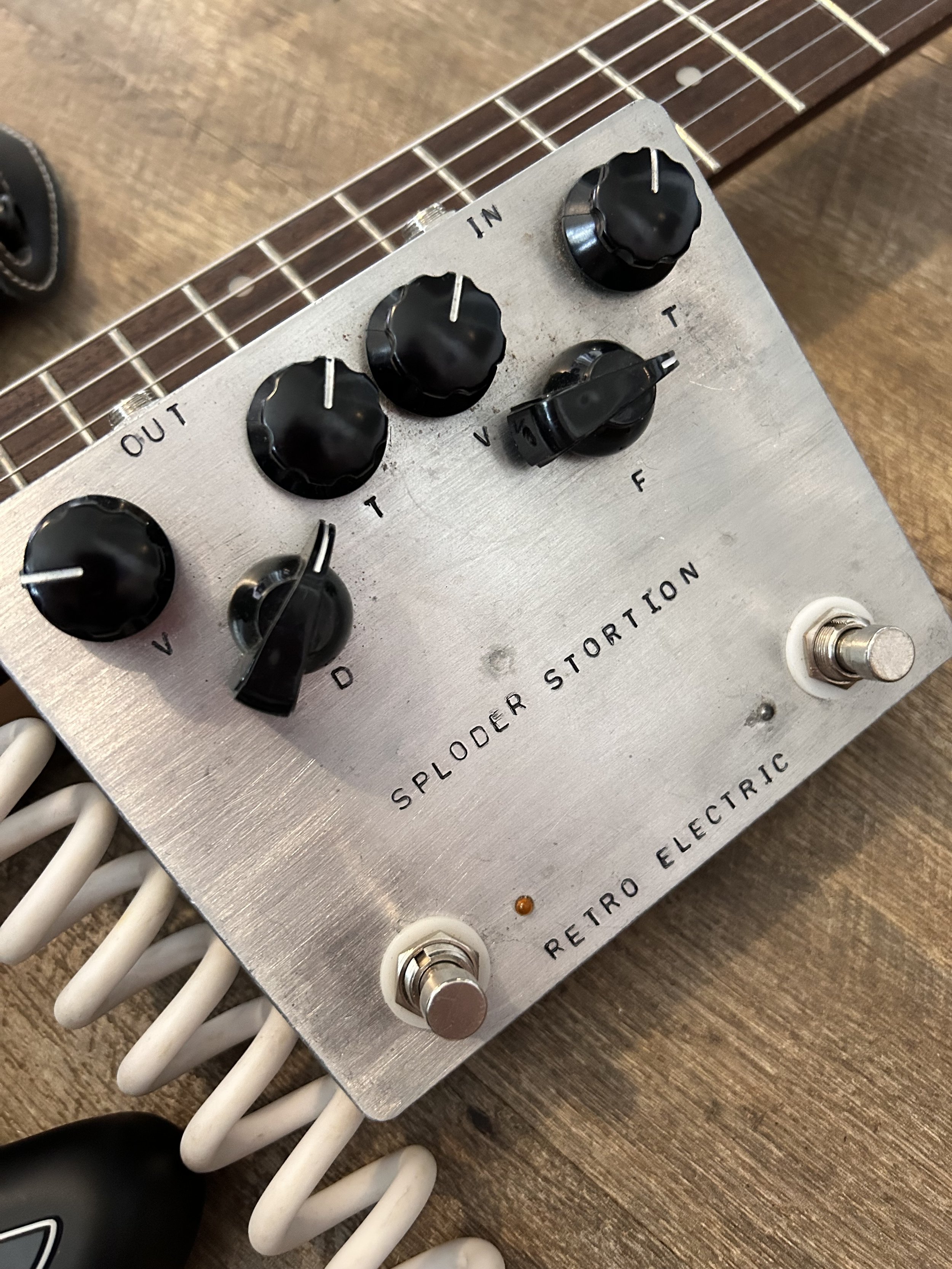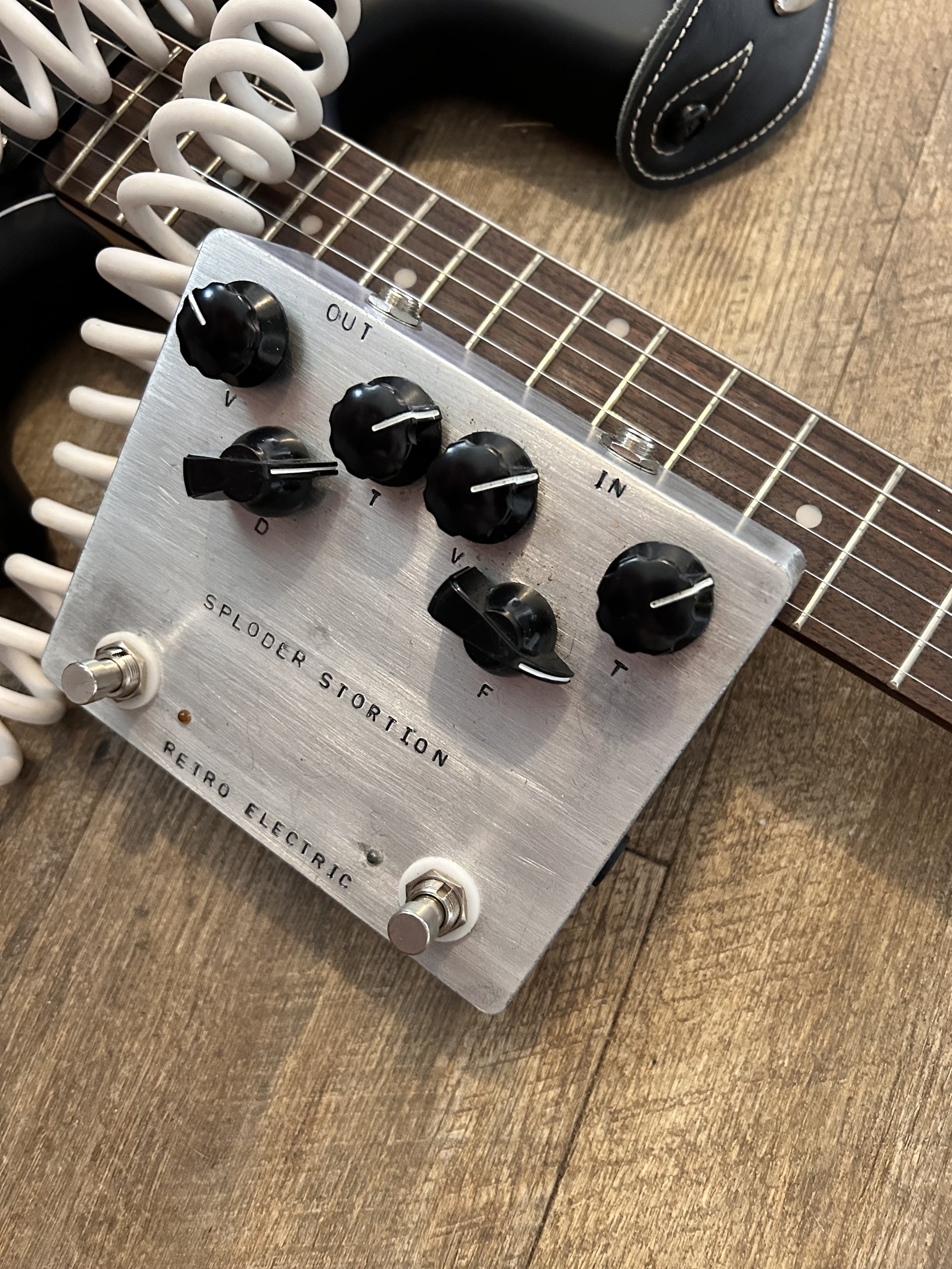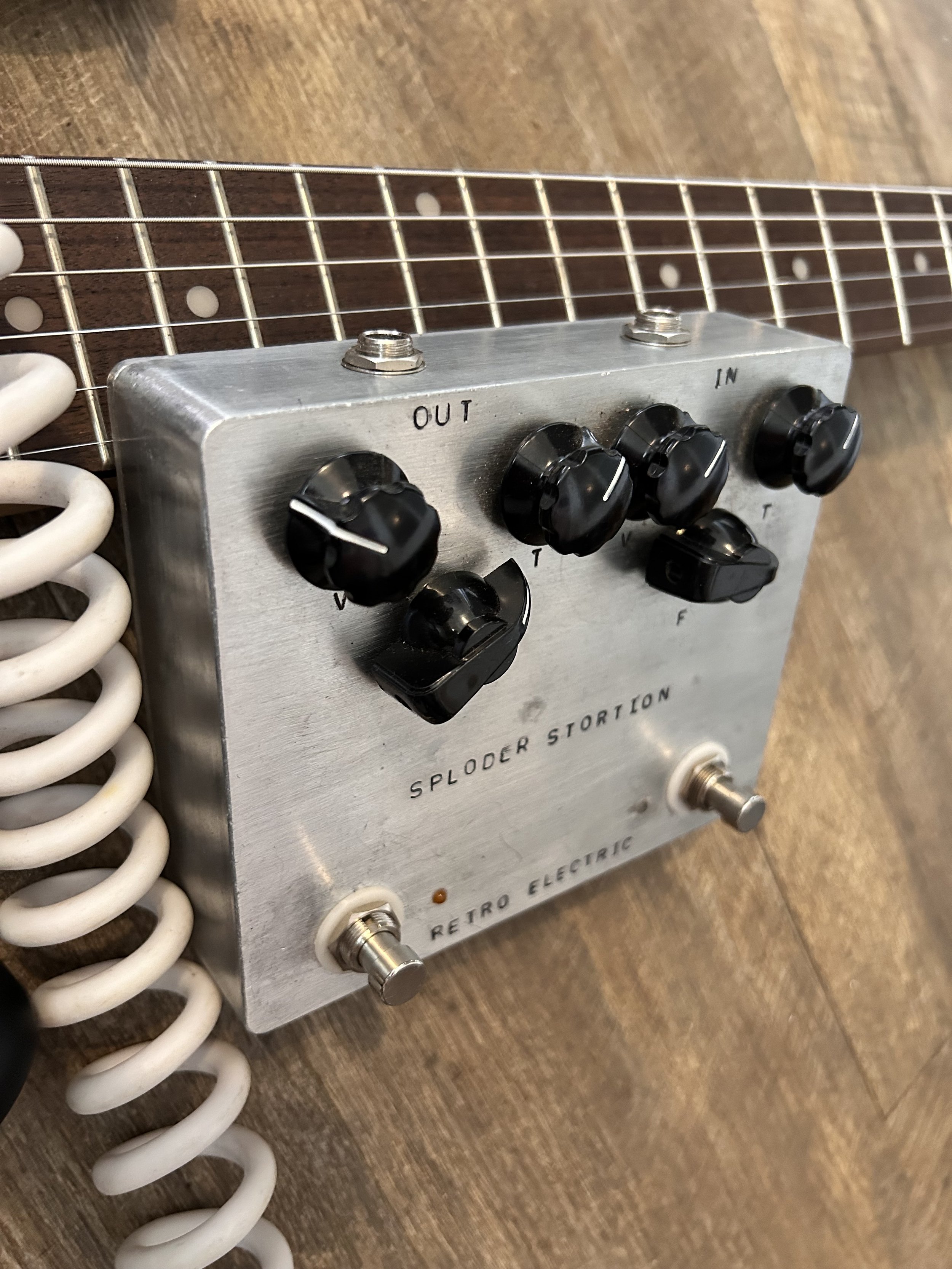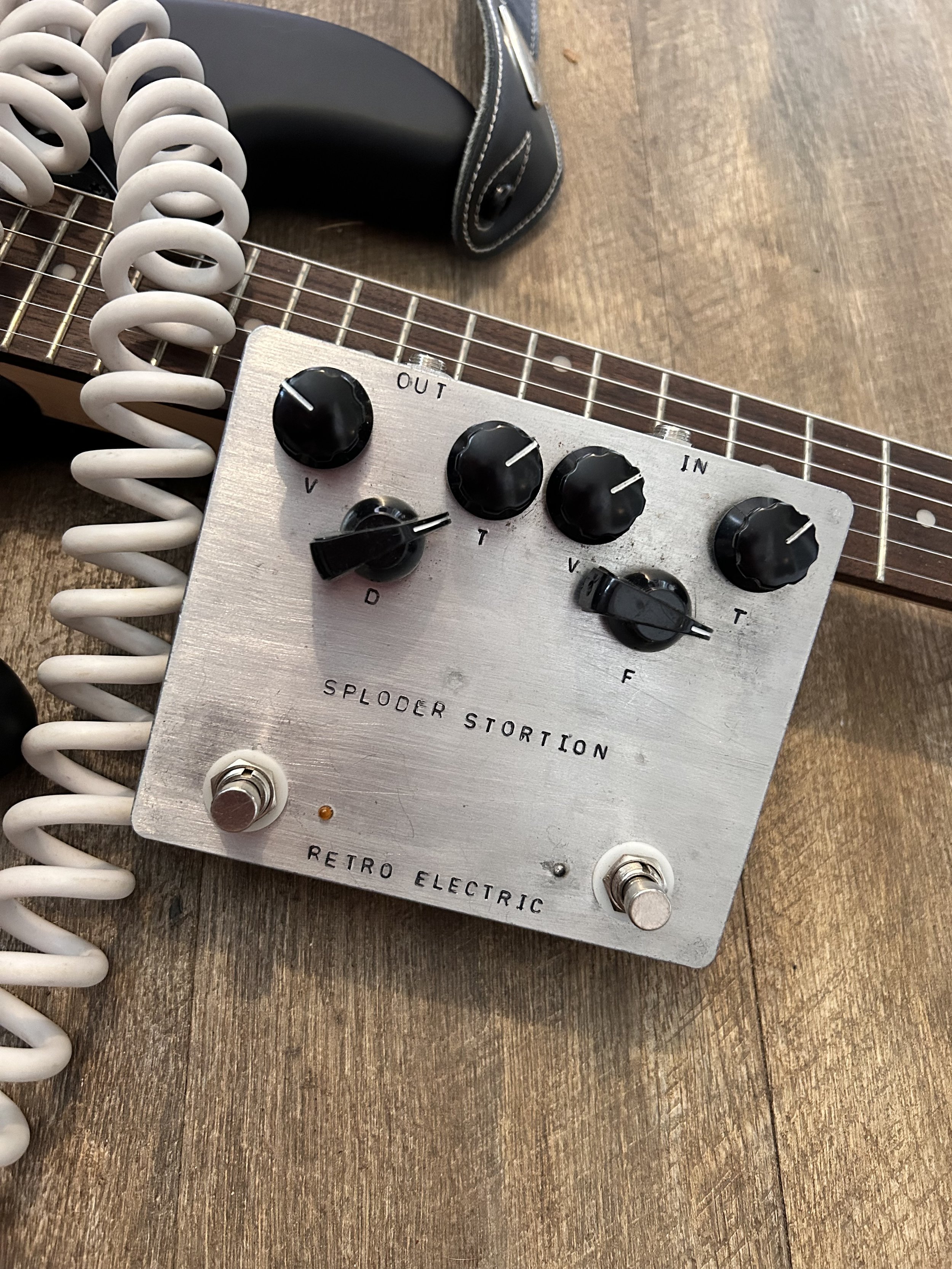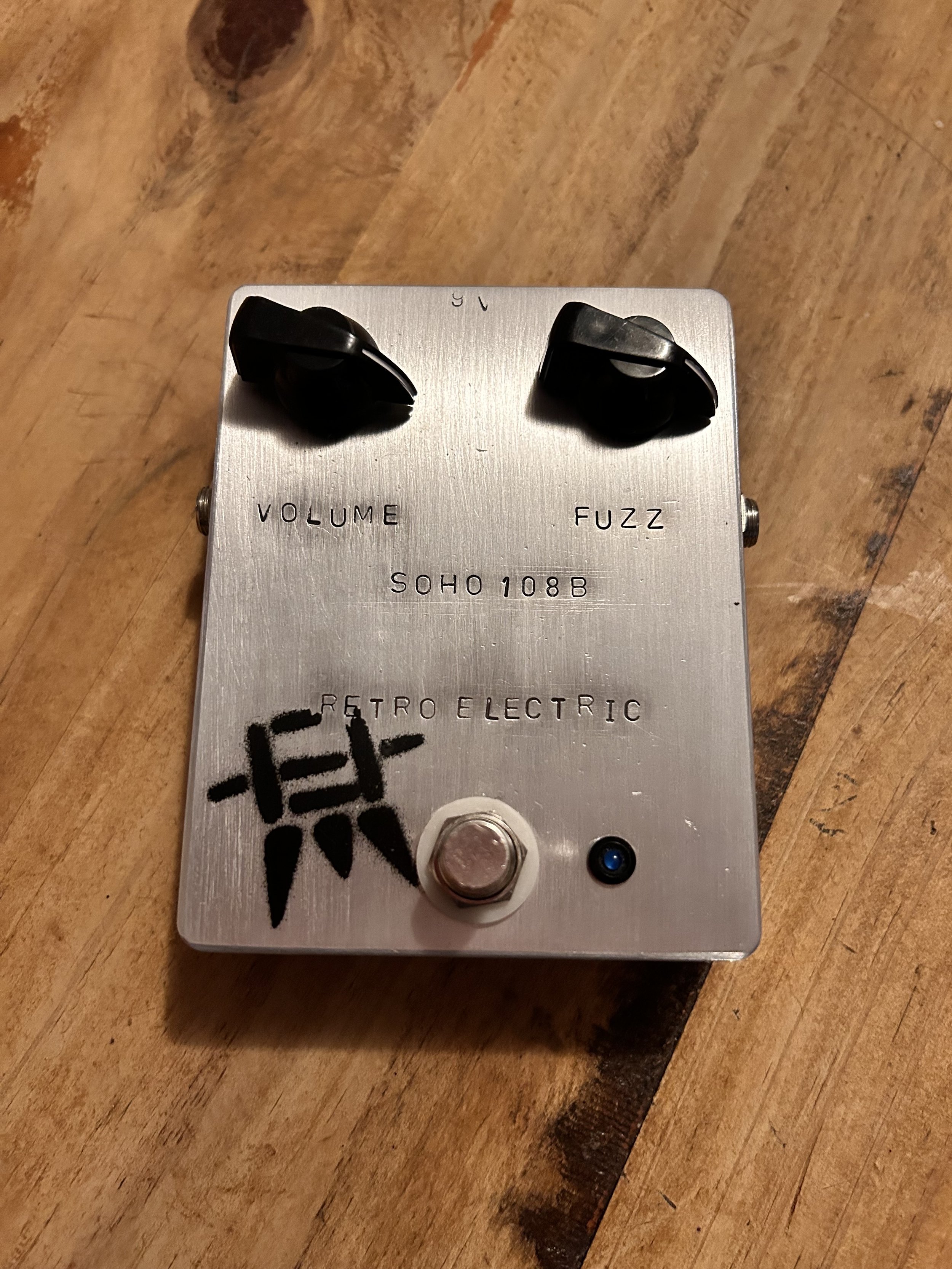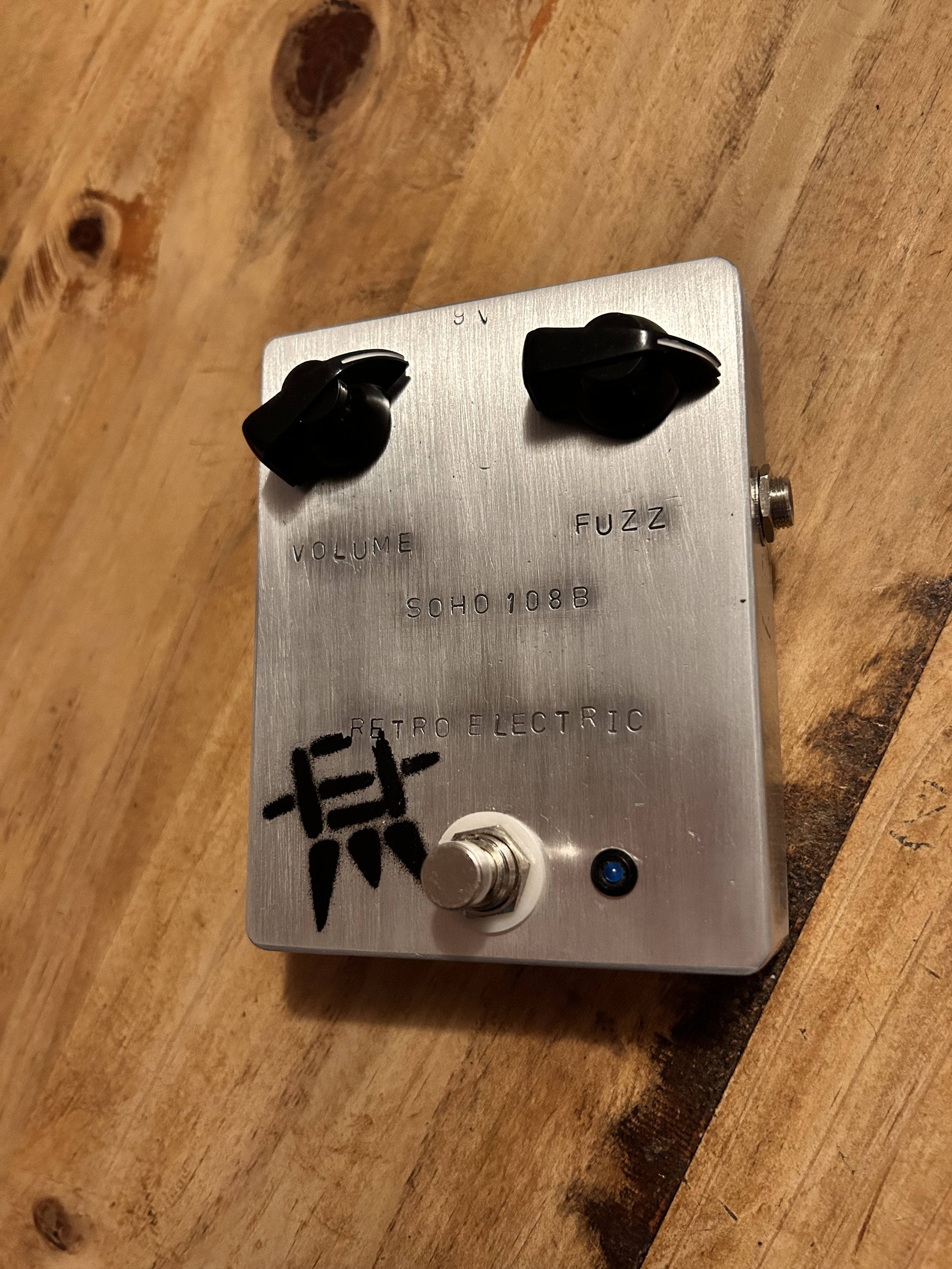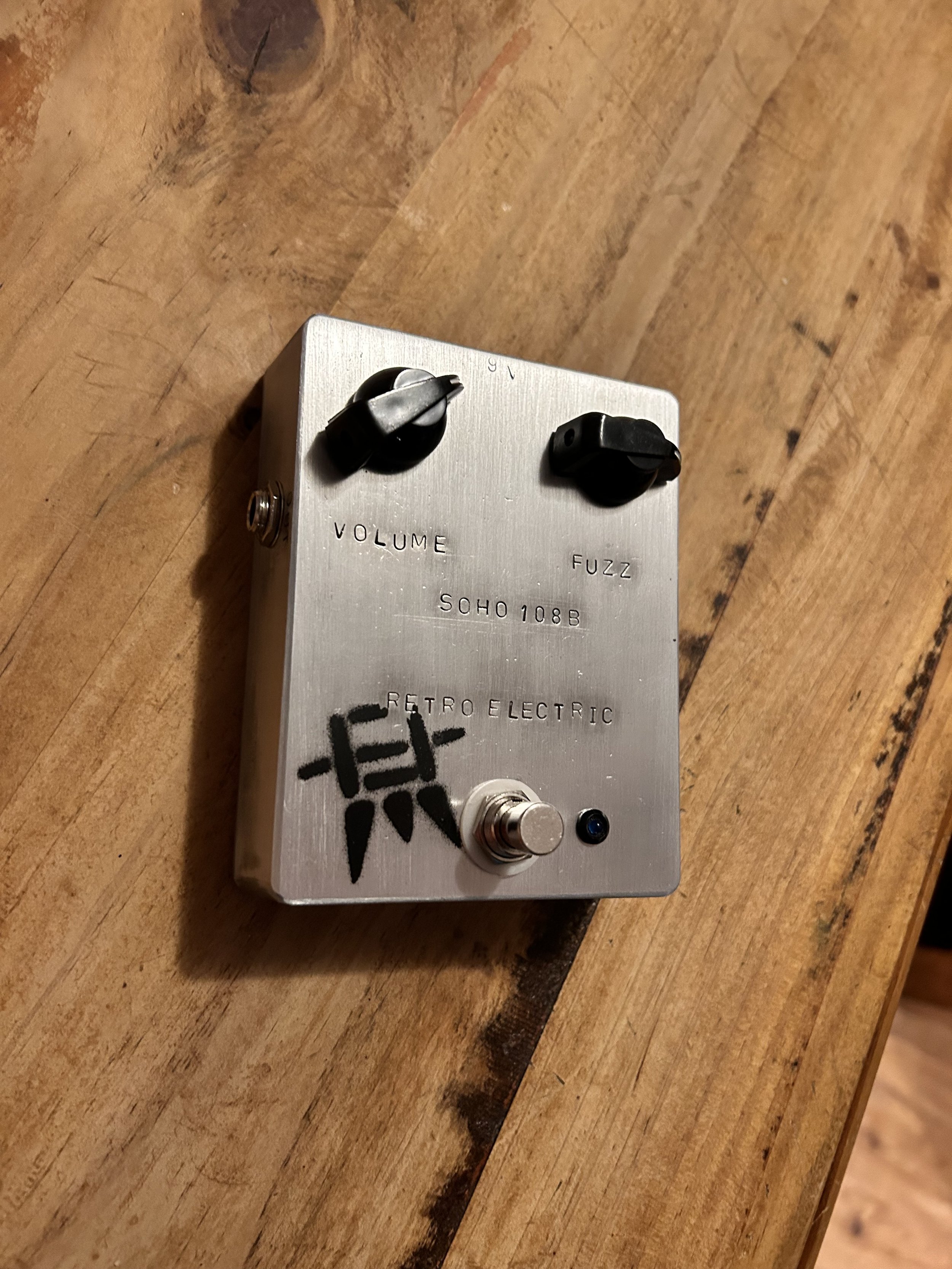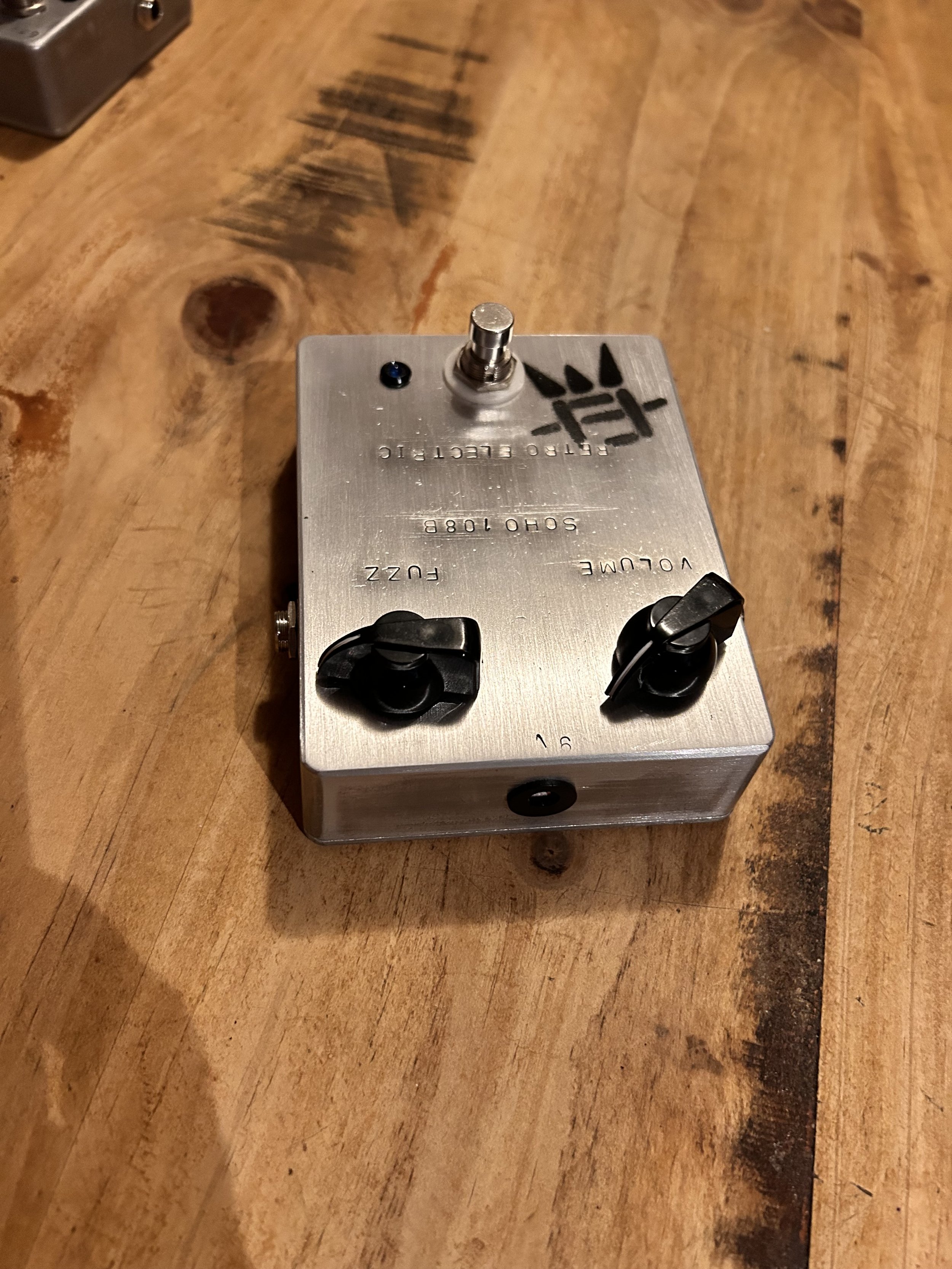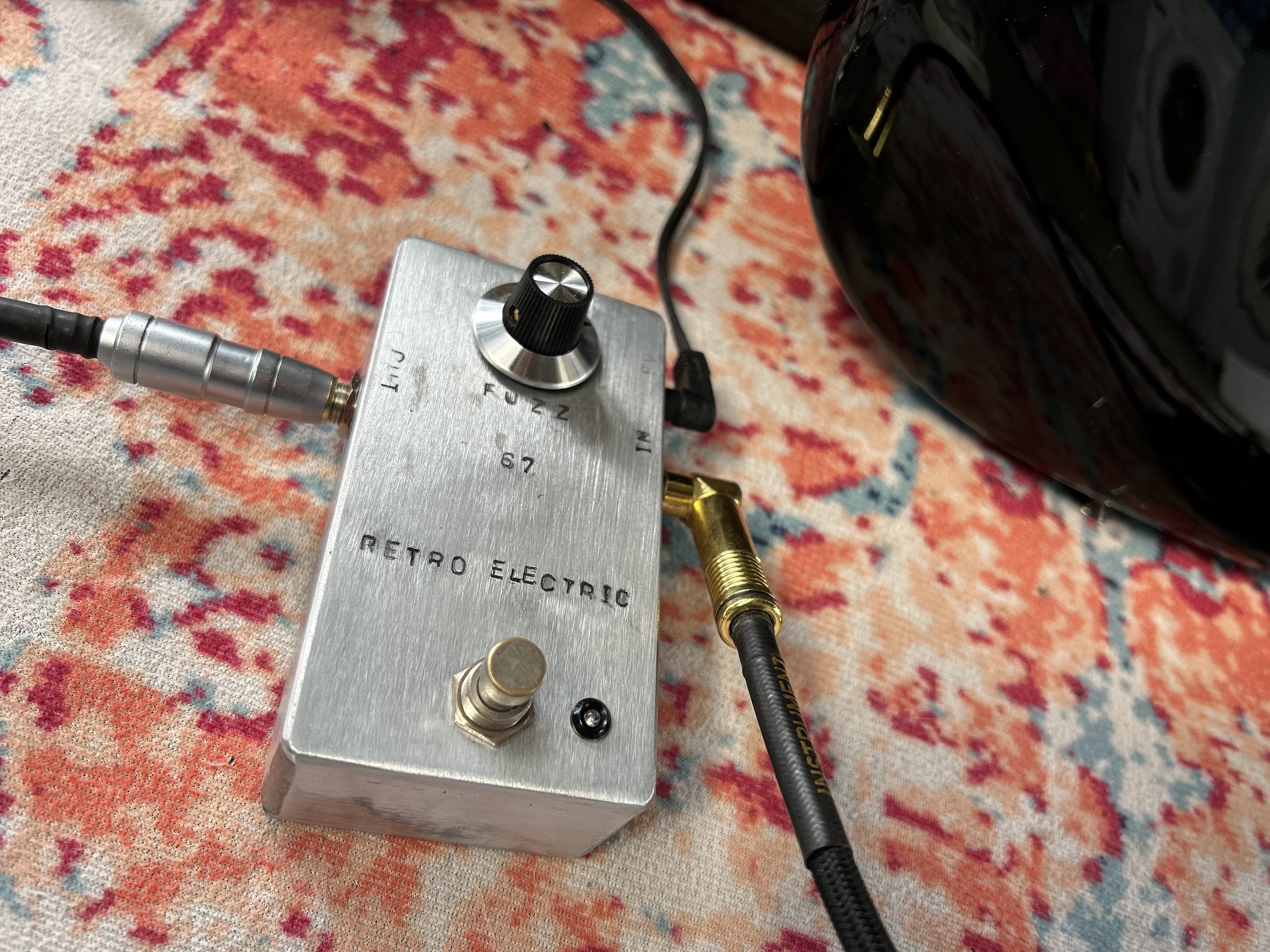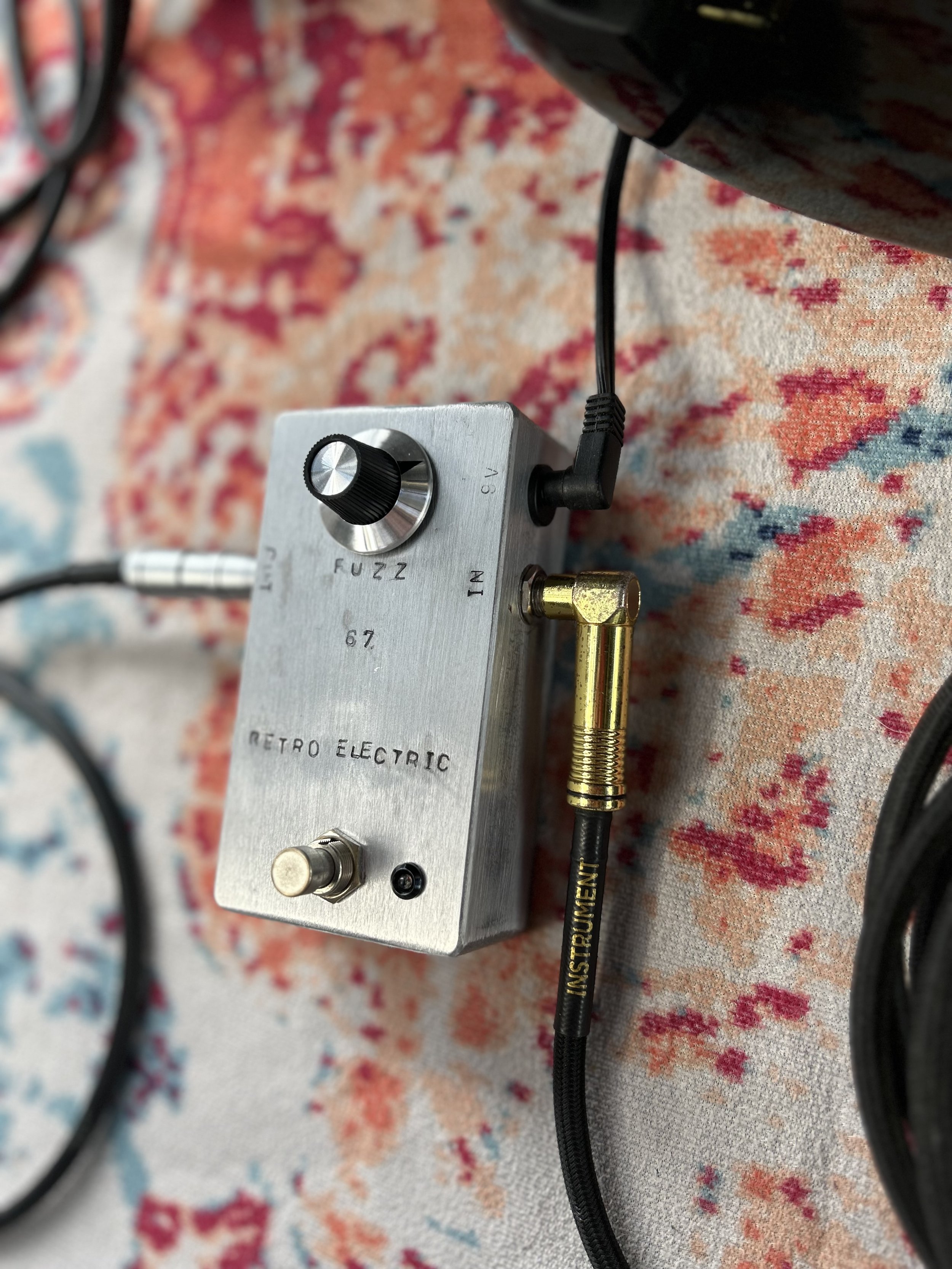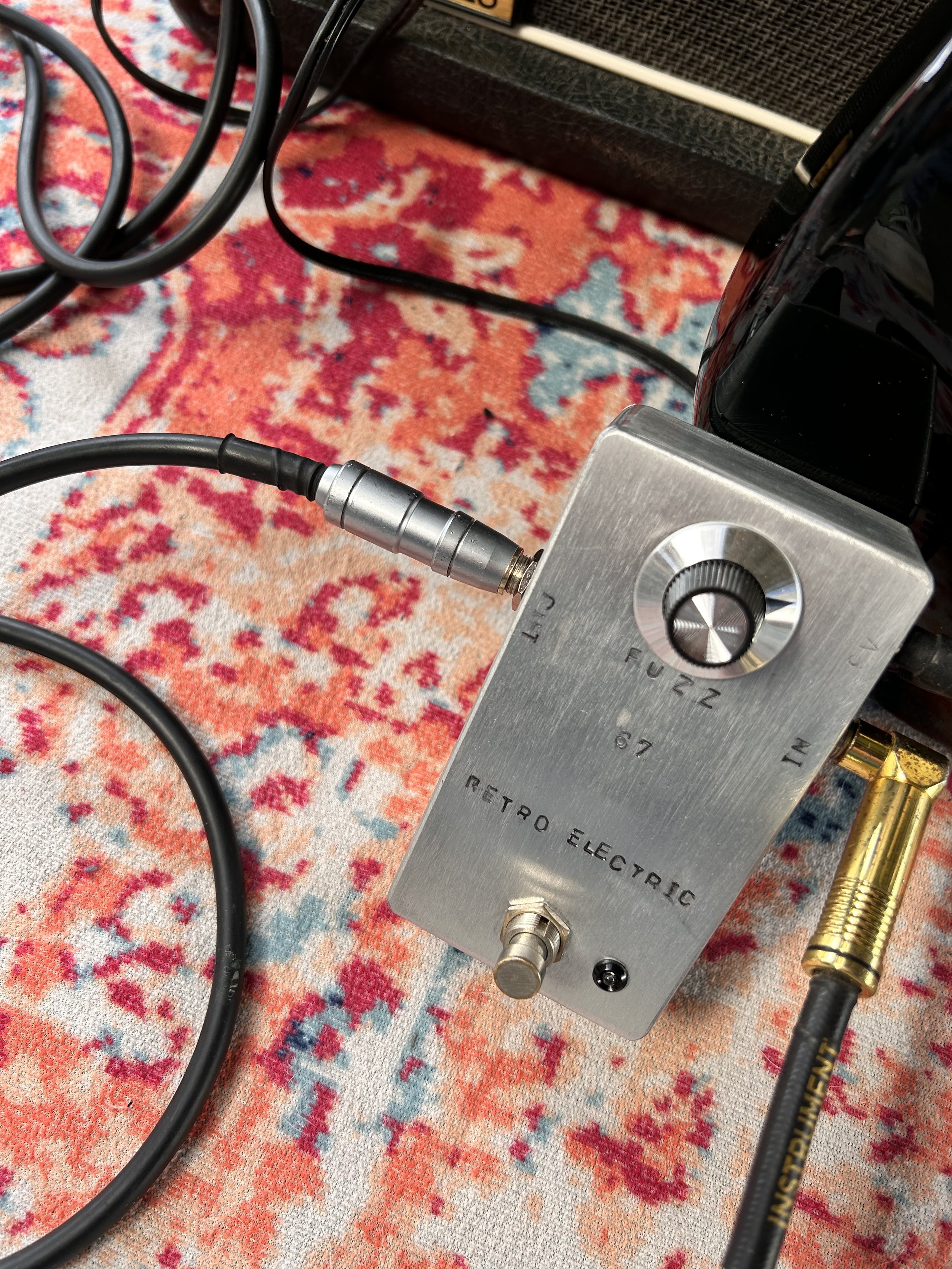 Image 1 of 4
Image 1 of 4

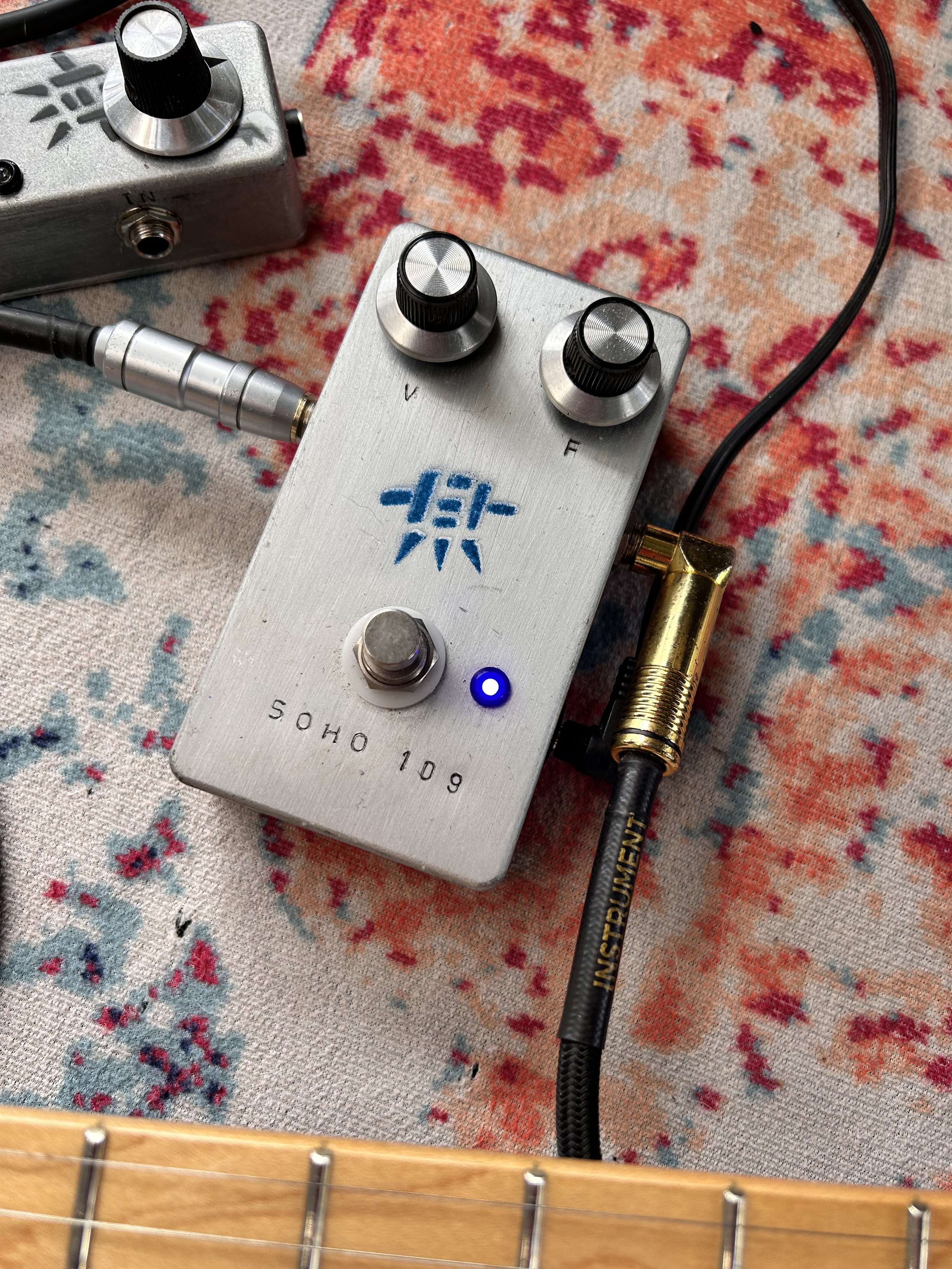 Image 2 of 4
Image 2 of 4

 Image 3 of 4
Image 3 of 4

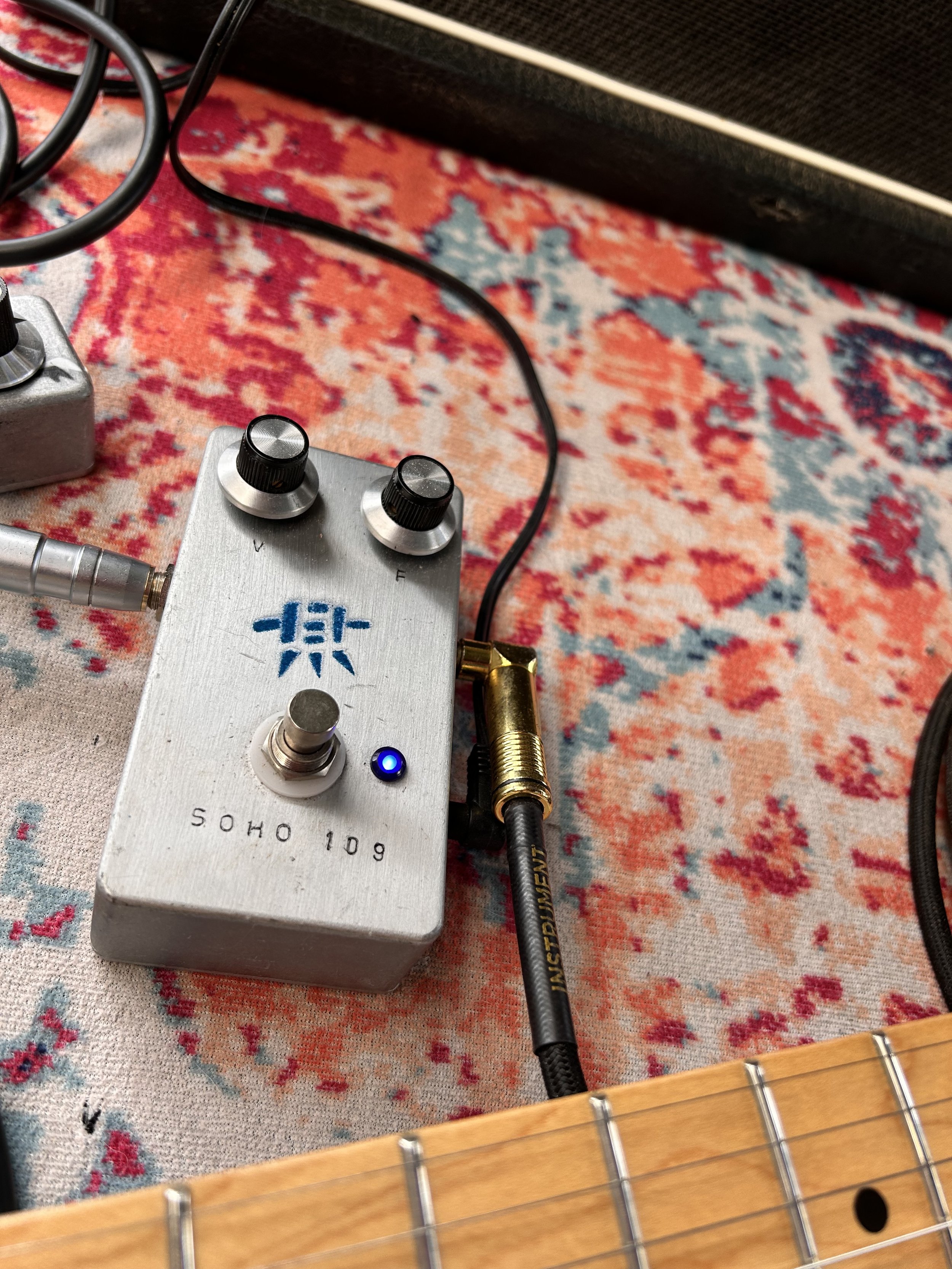 Image 4 of 4
Image 4 of 4





SOHO FFuzz by rETrO ELECTrIC FX
In the late 1960s the classic germanium transistors in the FF pedal was superseeded by the silicon transistor. There are many reasons for this change. The most noteable issues with germanium transistors was poor reliability and problems with temperature variations causing the pedal to sound different depending on ambient temperature. The silicon transistor solved many of these issues. They tended to have a slightly harsher tone but that never bothered Mr Hendrix.
rETrO ELECTrIC brings you the SOHO 109C. It is named after the type of transistor that has been chosen for this particular unit.
On an A/B test with the SOHO 108B, It’s a slightly harder sounding fuzz than the BC108B due to the different transistors.
Using your Pedal
Set your amp to it’s desired clean volume. Start with the pedal volume at 12 o’clock and gain maxxxed out. Turn on your pedal. You might hear a ‘bacon sizzle’ sound. Turn the fuzz down slightly until it clears. This is how the original Hendrix era fuzz pedals sounded. Now ride your guitar volume control to clean up your sound by turning it down or slamming your amp by turning it up. Your pedal will work best if it is first in your pedal chain after the guitar. The pedal’s transistors like to see the guitar pickups.
In the late 1960s the classic germanium transistors in the FF pedal was superseeded by the silicon transistor. There are many reasons for this change. The most noteable issues with germanium transistors was poor reliability and problems with temperature variations causing the pedal to sound different depending on ambient temperature. The silicon transistor solved many of these issues. They tended to have a slightly harsher tone but that never bothered Mr Hendrix.
rETrO ELECTrIC brings you the SOHO 109C. It is named after the type of transistor that has been chosen for this particular unit.
On an A/B test with the SOHO 108B, It’s a slightly harder sounding fuzz than the BC108B due to the different transistors.
Using your Pedal
Set your amp to it’s desired clean volume. Start with the pedal volume at 12 o’clock and gain maxxxed out. Turn on your pedal. You might hear a ‘bacon sizzle’ sound. Turn the fuzz down slightly until it clears. This is how the original Hendrix era fuzz pedals sounded. Now ride your guitar volume control to clean up your sound by turning it down or slamming your amp by turning it up. Your pedal will work best if it is first in your pedal chain after the guitar. The pedal’s transistors like to see the guitar pickups.

